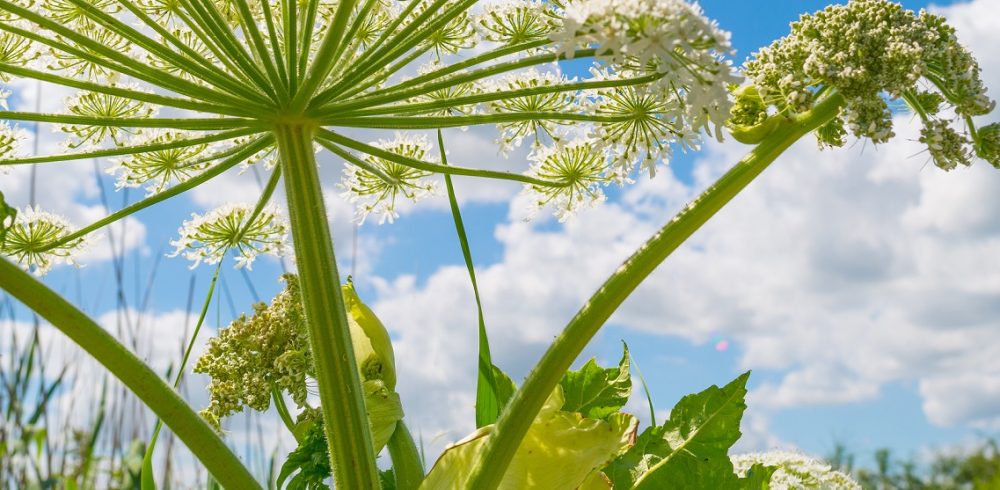Protecting Your Development Against Invasive Plant Species : Finding invasive plant species on a development site can be extremely concerning for developers. Not only does it have the potential to delay progress, it can also result in high remediation costs.
Invasive non-native plant species cost the British economy billions per year. However, if expert advice is sought at the very start of your project, the costs to a developer can be significantly minimised.
What are invasive plant species?
An invasive plant species is a plant that has overpopulated an environment, due to direct or indirect introduction. Many invasive plants have the potential to negatively impact its new environment, invading habitats and causing ecological, environmental and even economic damage.
Non-native plants are those that have been introduced outside their natural range by humans. Native species can also become invasive within certain ecosystems due to alterations of the environment.
There are a number of invasive plant species that are commonly found around development sites. These include New Zealand Pigmyweed, Cotoneaster Species, Himalayan Balsam, Giant Hogweed and Japanese Knotweed. They are considered ‘invasive’ due to their rapid rate of spread, suppression of other species, and impact on wider environments such as waterways.
How damaging are they?
Invasive plants can cause significant consequences for landowners and developers. In fact, their impact is so serious, they are considered one of the greatest threats to biodiversity in the world, alongside of climate change and pollution.
The damage caused by invasive plants includes:
- Altering ecosystems and habitats. Some invasive plants can change the chemical composition of soil or clog up waterways, leading to flooding.
- Outcompete native plants, threatening the long-term survival of the species.
- Be costly to eradicate and restore degraded environments.
Regulations and legislation
Before starting work on a site, developers should make sure that they are aware of the numerous regulations that are in place to help protect the environment from invasive plant species. These include:
- The Wildlife and Countryside Act (1981). This law states that developers are legally required to prevent invasive non-native plant materials on their land from spreading into the wild and causing a nuisance. They must also prevent harmful weeds on their land from spreading to neighbouring property. Schedule 9 of the Wildlife and Countryside Act (1981) also makes it an offence to plant or cause to grow invasive wild plants.
- EU Regulation on Invasive Alien Species, which still applies in the UK, lists 36 plants that should not be sold, planted or caused to grow.
- The Infrastructure Act (2015), which includes new provisions to control invasive non-native species in England and Wales. This includes two levels of control, including a species control agreement and species control order. Only those species listed on Schedule 9 of the Wildlife & Countryside Act can be subject to these control measures.
Calling in the experts.
With legislation stating that landowners and developers are responsible for controlling and managing invasive species, it is wise to employ a trained ecologist to support with initial investigations and plans. After all, if invasive plant species are not identified at the early stages of planning, and detailed expert surveys are not conducted, it can cause costly delays to construction.
It is vital that detailed checks and risk assessments are carried out for non-native invasive species as part of the initial feasibility studies and surveys.
An ecological appraisal will identify any invasive plants, and will include advice on initial findings, and mitigation options to avoid impact and enhance biodiversity. The ecologist will also create a report to submit to the planning authority, providing findings, compliance, enhancement options and supporting data.
If these surveys find invasive plants on a site, work can still go ahead, but a plan to remove and safely dispose of them will be required. A comprehensive method statement, including an ecological protection plan and species protection plan, can be created by an expert ecologist.
With invasive plant species having the potential to significantly impact development sites, it is vital to consult with trained ecologists as early on the planning process as possible, even before land acquisition.
____
Engain has a team of experienced ecologists that can support you throughout the process and ensure you remain compliant at all times. To discuss how Engain’s environmental consultants can ensure your project runs smoothly from the start, call 01225 459564 or email enquiries@engain.com
Manufacturing & Engineering Magazine | The Home of Manufacturing Industry News















